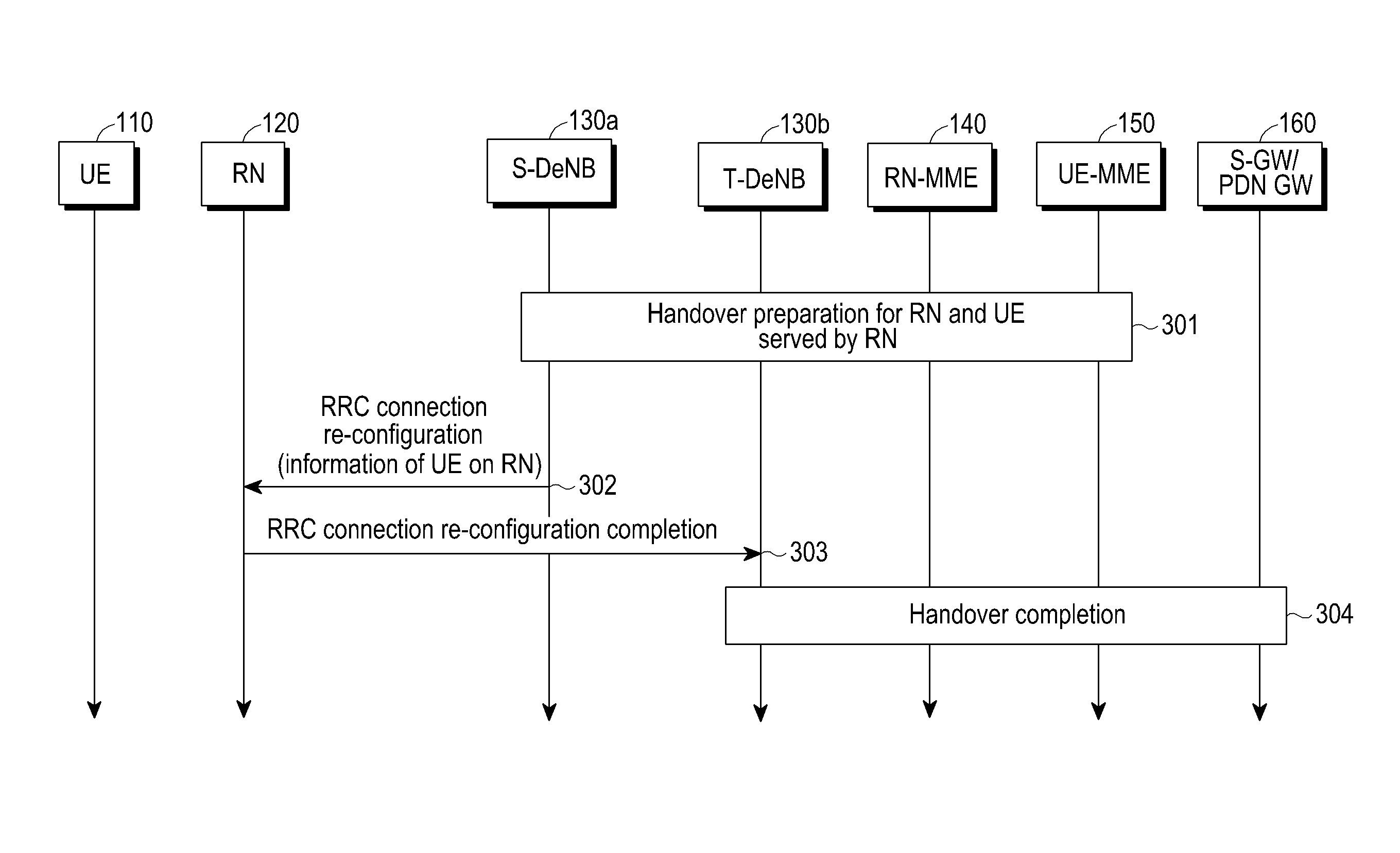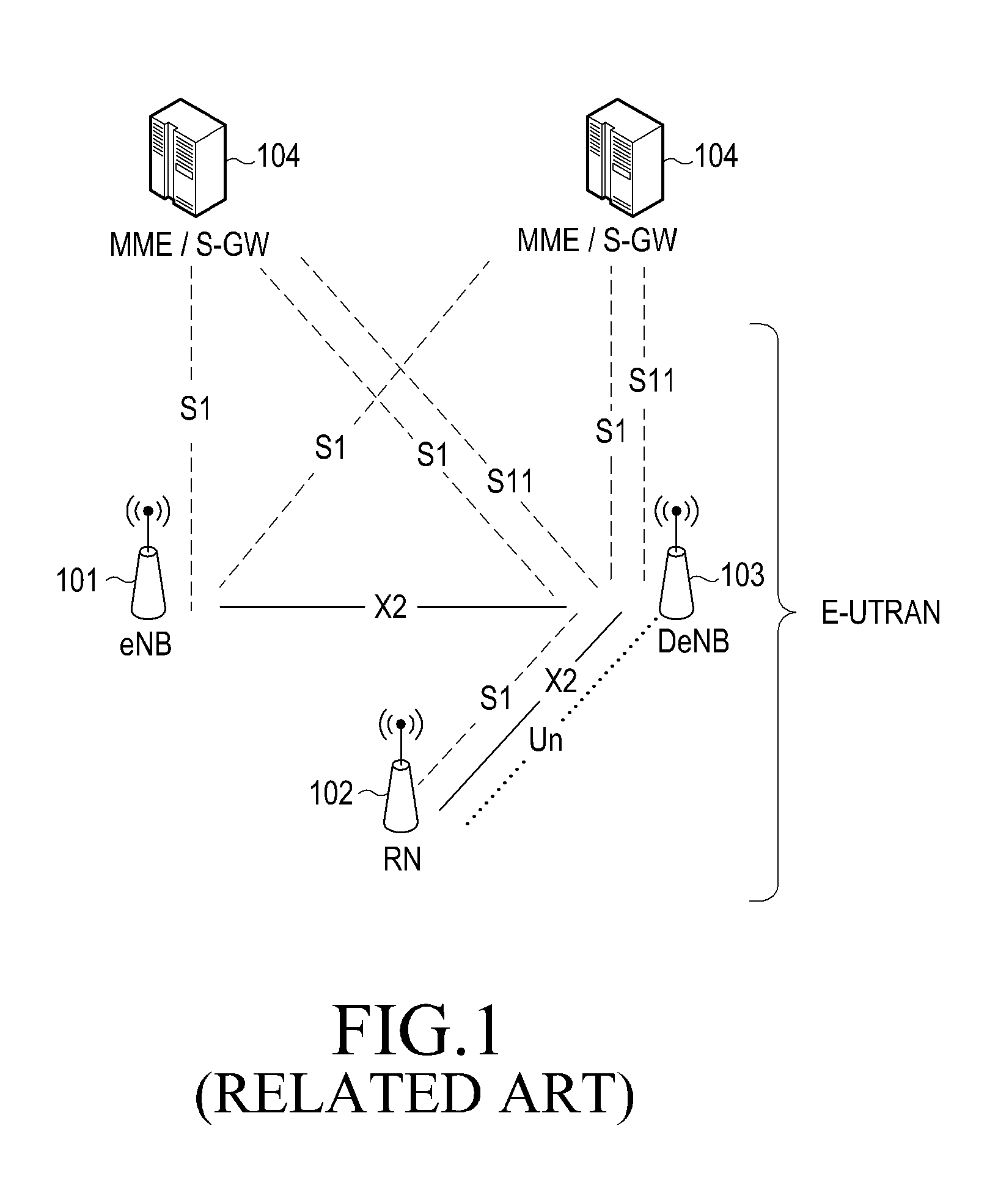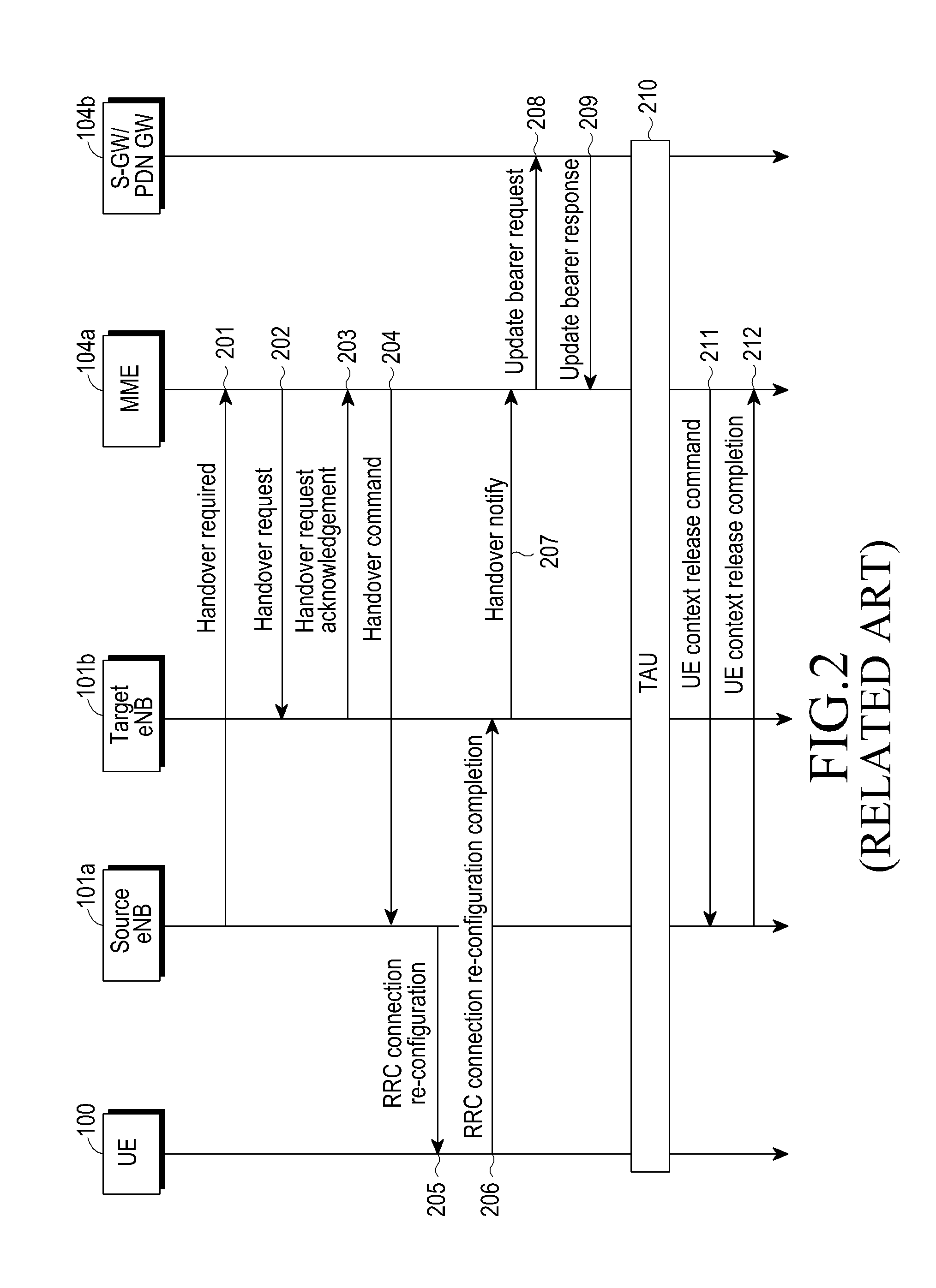Method and device for supporting group handover
a technology of mobile communications system and group handover, applied in the field of mobile communications system, can solve the problems of inability to support the movement between different cells, waste of network resources, and inability to meet the operator's demands on the train at a speed of 250-350, so as to reduce the failure of the handover process, ensure the continuity of service, and reduce the unnecessary signaling procedure
- Summary
- Abstract
- Description
- Claims
- Application Information
AI Technical Summary
Benefits of technology
Problems solved by technology
Method used
Image
Examples
embodiment one
[0135]FIG. 3 is a flow diagram of supporting group handover according to an embodiment of the present disclosure.
[0136]Referring to FIG. 3, an S-DeNB 130a triggers handover preparation processes for an RN 120 and a UE 110 served by the RN 120 in operation 301. During the handover preparation process, allocation for the RN resource by the T-DeNB 130b in a Un interface is completed. It is necessary to transmit the eNB UE 110 an S1 AP ID and / or an MME UE S1 AP ID of the UE 110 served by the RN 120 in the RN and the T-DeNB interfaces to the S-DeNB 130a. It is necessary to transmit the uplink TEID and transport layer address of the UE 110 served by the RN 120 allocated in the RN and the T-DeNB interfaces to the S-DeNB 130a.
[0137]In operation 302, the S-DeNB 130a sends an RRC connection re-configuration message to the RN 120. The message includes mobile control information of the RN 120 as the UE 110. The message further includes information of the UE 110 served by the RN 120. The inform...
embodiment two
[0146]In the process of movement of the RN 120, it is necessary to switch from a source base station S-DeNB 130a to a target base station T-DeNB 130b, and this embodiment provides handover procedures of the RN 120 and the UE 110, ensures the continuity of service of the UE 110 served by the RN 120, and reduces handover signaling. An explanation and description of operations that are irrelevant to the present disclosure are omitted.
[0147]FIG. 4 is a flow diagram of supporting group handover according to an embodiment of the present disclosure.
[0148]Referring to FIG. 4, the S-DeNB 130a decides to initiate handover of the RN 120. The S-DeNB 130a switches the UE 110 served by the RN 120 to the T-DeNB 130b at the same time. The S-DeNB 130a sends a handover required message to the MME of the RN 120 (i.e., RN-MME 140). The handover required message includes all the existing information of the RN 120 as the UE 110. That is, information of the UE 110 is included in the existing handover requ...
embodiment three
[0181]In the movement process of the RN 120, it is necessary to switch from a source base station S-DeNB 130a to a target base station T-DeNB 130b. This embodiment provides handover procedures of the RN 120 and the UE 110, ensures the continuity of service of the UE 110 served by the RN 120 and reduces handover signaling.
[0182]This embodiment differs from embodiment one in that, in embodiment one, re-location of the MME of the RN 120 and of the MME of the UE 110 does not occur. In this embodiment, re-location of the MME of the RN 120 and the MME of the UE 110 occurs. The method of this embodiment is also used in the case that there is only re-location of the MME of the RN 120 or that there is only re-location of the MME of the UE 110, or that there is only re-location of part of the MME of the UE 110. In this embodiment, the source MME of the RN (e.g., the S-RN-MME 140a) selects a target MME (e.g., the T-UE-MME 150b) for the UE 110.
[0183]FIG. 5 is a flow diagram of supporting group ...
PUM
 Login to View More
Login to View More Abstract
Description
Claims
Application Information
 Login to View More
Login to View More - R&D
- Intellectual Property
- Life Sciences
- Materials
- Tech Scout
- Unparalleled Data Quality
- Higher Quality Content
- 60% Fewer Hallucinations
Browse by: Latest US Patents, China's latest patents, Technical Efficacy Thesaurus, Application Domain, Technology Topic, Popular Technical Reports.
© 2025 PatSnap. All rights reserved.Legal|Privacy policy|Modern Slavery Act Transparency Statement|Sitemap|About US| Contact US: help@patsnap.com



